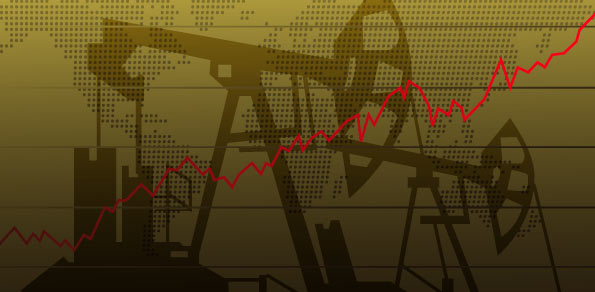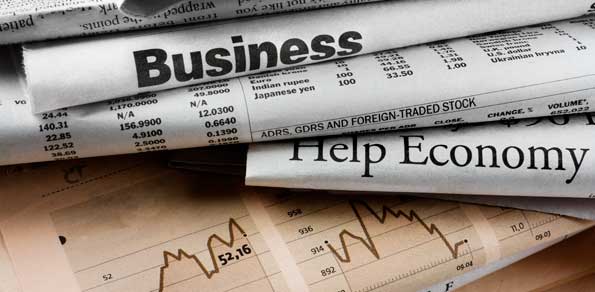Oil Hits A New Sterling Record On Iran Fears..But sshhh..Don’t Tell UK Motorists
Feb 20, 2008 at 04:01pm New York:
“The price of crude oil has scraped above the $100-a-barrel mark in recent months, but for the first time it actually closed above the psychological ceiling. Prices settled at $100.01 a barrel on the New York Mercantile Exchange Tuesday, while futures reached $100.10 – the highest intra-day price since trading began in 1983. Recent political tensions between the US and the world’s fifth largest oil exporter, Venezuela, were blamed for some of the upward price pressure. Additional push came from speculators betting on a possible reduction in production by the Organisation of Petroleum Exporting Countries (OPEC)”
A ‘rubicon’ was crossed on Feb 20th 2008, as the snippet of news above points out the market for WTI had consistently flirted with $100 a barrel, but for the fist time the actual closing price in the USA was above $100. It’s fascinating to note that speculation concerning tensions with Venezuela, the fifth largest exporter at the time, were part of the ‘blame culture rhetoric’ together with OPEC potentially limiting supply.
At first it all appeared to be rather innocent and naive, in stark contrast to the game of risk that’s currently bring played out with Iran which has caused the recent spike in WTI and Brent crude. The complex geo political situation involving: Russia, China, Iran, the USA, Israel, the supply of oil and the valuation of the currencies buying oil is light years (in terms of political distance) from OPEC supply issues and the USA falling out with president Chavez for refusing to become a client state. However as price continued to rise in 2008 by July other far more familiar and menacing rhetoric began to be aired in the public domain..
The Guardian, Saturday 12 July 2008
“Oil prices surged to a new record of $147 a barrel yesterday on increasing tension between the west and Iran. Brent crude rose to $147.02 in London, while in the US light sweet crude was up by more than $3 to $146.90. Iran this week tested missiles capable of reaching Israel, leading US secretary of state Condoleezza Rice to warn that America would defend its allies. Iran, second largest producer in the oil cartel Opec, responded with another missile launch.
Neither the US nor Israel has ruled out a military strike on Iran. Traders fear the oil-producing nation could retaliate by blocking the Strait of Hormuz, through which 40% of the world’s tanker traffic passes.”
Oil Consumption And Supply
Global oil consumption was up in 2010, bucking the trend for the two previous years under the grips of the Great Recession, increasing 2.7 million barrels per day to a then new record high of 87.4 million barrels per day (mpd). However, increases in global oil production fell short of that by 900,000 barrels per day, rising supply wasn’t keeping pace with rising demand. A phenomena that everyone from the US military, to the IEA, to oil industry execs, and plenty of ‘doom and gloom’ peak oil researchers (who likely will be more accurate than the techno optimists out there) had been saying for some time.
Global oil demand is forecast to climb to 89.9 mb/d in 2012, a gain of 0.8 mb/d (or 0.9%) on the previous year. Growth has been curtailed by 0.3 mb/d versus January, as the economic growth rate that underpins the global oil demand outlook, has been reduced to 3.3% from 4.0% previously.
OPEC crude oil supply in January rose to 30.9 mb/d, the highest level since October 2008, on a steady ramp-up in Libyan production and sustained output from Saudi Arabia and the UAE. The ‘call on OPEC crude and stock change’ is cut by 100 kb/d for 2012, to 29.9 mb/d. OPEC’s ‘effective’ spare capacity is largely unchanged, at 2.82 mb/d.
December OECD industry oil stocks declined by 40.8 mb to 2 611 mb, and remained below the five-year average for a sixth consecutive month. Forward demand cover fell by 0.7 days to 57.2 days, but remains 1.6 days above the five-year average. January preliminary data show a shallower-than-normal 11.4 mb build in OECD industry stocks.
Oil Price In Sterling And Its Immediate Affects
Oil priced in sterling reached a record high on Wednesday, and it’s once again breached that level this morning. When WTI reached the record of circa €148 a barrel in 2008 sterling was much stronger versus the USD, close to one pound for every two dollars. However, with the exchange rate much less, oil priced in Sterling is now at record highs. The cost of Brent crude hit $121.92 a barrel, or £77.77 on Wednesday, beating the sterling record set last year at the height of the Libyan conflict.
The jump in the oil market comes after the UK price of diesel reached a record 143p a litre last week amid accusations in Europe and the US that high fuel prices are the result of a dysfunctional market. UK refiners have come under fire for pushing up the price of fuel to maintain margins squeezed by falling demand. Most UK refiners are debt-laden independent operators struggling to repay debts in a period of declining sales.
A high oil price was behind the sharp jump in UK inflation last year to above 5%. A rise this year could undermine George Osborne’s hopes of a recovery. Officials in Spain, Italy and Greece are also watching the oil price closely because they are major importers, especially of Iranian crude, and are vulnerable to increased costs.
Will The UK Motorist Continue To ‘Shrug And Pump’?
I’ve often despairingly referred to my fellow UK citizens as “shrug and pumpers”. No matter how bad the economy gets, or how high the price of raw materials reach, the dutiful UK citizen simply “shrugs and pumps”. Car insurance in the UK for young adults is a preposterous price, £3,000 per year for 18 year olds to be insured (on their parents insurance) is the norm and this to drive cars worth £1,500. Yes, it’s that economic room 101 phenomena again, the price of the invisible now exceeds the price of the physical by 2:1. But never has the desire to fund a car been more acute than in the UK. For young people on low wages the car represents freedom and despite motoring eating up to half of their salary per month young adults appear to be determined to re-enforce their parents love and addiction of motoring.
As oil priced in sterling reached a record high both yesterday and today the recent spike will eventually feed into prices at the pump, but will it cure the insatiable demand, or will the UK motorist rebel? If previous evidence is indicative then the answer to both questions is a definite no. In 2005, during one of the ‘fuel protests’, only two individuals attended a protest and blockade..
Protesting Is Over
The fuel protests in the United Kingdom were a series of campaigns held in the United Kingdom over the cost of petrol and diesel for road vehicle use. There have been three campaigns in the 21st century. The first protest in 2000 was primarily led by lorry drivers and farmers.
[tabs style=”default” title=”UK Petrol Protests”] [tab title=”2000″]Tax accounted for 81.5% of the total cost of unleaded petrol, up from 72.8% in 1993. Fuel prices in the UK had risen from being amongst the cheapest in Europe to being the most expensive in the same time frame. The protesters said that higher transport costs in the UK were making it difficult for haulage industry to remain competitive. The worldwide price of oil had increased from $10 to $30 a barrel, the highest level in 10 years. Drivers in the UK were now paying an average of 80 pence a litre for unleaded and 80.8p for diesel. The government had already abandoned the fuel tax escalator in early 2000.[/tab] [tab title=”2005″]In August 2005, unleaded petrol increased in price to record highs of over 90 pence, with a small number of stations charging over £1 a litre. In September the average price had reached 94.6p a litre, with the rise being partially blamed on decreased world supply after Hurricane Katrina caused damage to some oil facilities in the United States of America.
The BBC reported on 7 September 2005 that the group responsible for the blockades in September 2000 was threatening to stage protests at oil refineries from 0600 BST on 14 September 2005 unless reductions in fuel duty were made. The government drew up contingency plans to maintain the supply of fuel, including using 1000 army drivers to operate tankers, introducing fuel rationing and confiscating the driving licences of those who broke the law.
Panic buying was reported on 13 September 2005 as drivers stocked up on fuel with drivers reported to be waiting an hour to fill their vehicles with petrol. At its height, around 3,000 petrol stations were emptied of fuel.
However, on 14 September 2005, only a small number of protesters arrived at the refineries with no intention to start blockading the entrances. The UK Petroleum Industry Association said the day’s protest had proved “thankfully amazingly quiet” with the largest event attended by People’s Fuel Lobby leader Andrew Spence, attracting just 10 protesters at its peak. At the Stanlow Refinery, which was blockaded in 2000 only two protesters attended the demonstration.[/tab] [tab title=”2007″]Towards the end of 2007, fuel prices exceeded £1 per litre with a 2 pence rise in fuel tax in October, resulting in the highest diesel prices and the fourth highest for petrol in Europe. New protests were planned by two unconnected groups, one called Transaction 2007 and the Road Haulage Association (RHA). The Scottish branch of the RHA proposed a rolling roadblock by around 30 vehicles, whereas Transaction 2007 intended to protest outside oil refineries. Whilst the rolling road block attracted 45 vehicles driving at around 40 miles per hour (64 km/h) on several motorways, the level of protest at oil refineries was lower than in 2000.[/tab] [/tabs]





